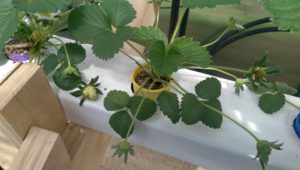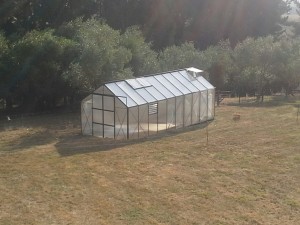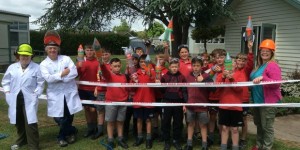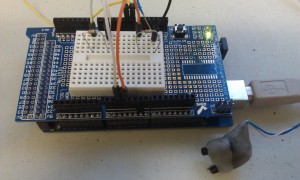[Warning: This is frank stuff concerning surgery on male genitalia]
Take heart, guys, I did it and it worked out fine. The internet abounds with people who had problems with this, because the ones who don’t have a problem don’t have much to write about. As with most men, I panicked like hell when I found out that the lump in my prostate was a cancer. With current technology (circa 2018) this meant one of two things: radiation and hormones, or surgery to remove the entire prostate.
The concept of being on hormone blockers, and having radioactive things in my groin did not appeal. My surgeon informed me that the cancer was relatively large – about 20% the volume of my prostate – and that with a gut ailment made me a poor candidate for radiotherapy. Also surgical recovery in my case would be more rapid, and I would be more likely to recover “function.” The main downside was that instead of relatively non-invasive treatment lasting a year, I’d have to get over open abdominal surgery and re-learn how to use my bladder.
First off, it was very important to keep sight of the primary objective here: get rid of the cancer. I had had a Fusion Biopsy because of aforementioned gut issues, and an advantage of that was a very accurate biopsy of the cancer. It was in one lump and wasn’t going anywhere yet. So I had a life to look forward to.
Until I had the biopsy I was completely symptom free. Absolutely nothing. All worked perfectly as per specification. After the biopsy, the prostate swelled up and I experienced issues urinating, maintaining erections, and for a while there was bruising, and blood in semen and urine. This mostly passed but I was anxious about the erection thing and it put me off my stride. Was this a harbinger of things to come?
You have to wait a few months after the biopsy before the operation. You’ll want to find things to distract you. I spent a record amount of time at the rifle range, and went on a holiday to Europe. I panicked, my use of sleeping pills increased. I became a trifle difficult to deal with. Every little twinge in the groin area was incorrectly blamed on the cancer. Sex was difficult because it was nigh on impossible not to think of the cancer. Worst of all, I could find very little concrete information on what my likely outcome was.
So like many others, I resorted to Dr. Google. I found a lot of things I hadn’t been told, and a huge variation in outcomes for continence, erectile function, and orgasm. I was clearly up against two things:
Firstly, the doctors don’t want to scare you off. Some people might get so worked up they’d rather run off and die. I’m not one of those people and I hope you aren’t either. In fact, I feel much more comfortable knowing what’s going on even if the news isn’t good. Many people I’ve met in the medical profession have difficulty grasping that. Anyway, none of that was helping me.
Secondly, they can’t tell. What I did get from the doc was basically that I had a 50/50 chance of regaining “normal” sexual function, maybe with a bit of help from pills. I’d no longer produce ejaculate, and would lose 10-20mm length off the penis. The bladder would take between 2 and 18 months to become continent, and there were fix-ups if it didn’t want to heal.
Dr. Google gave lots of different numbers. Take your pick. One major problem being nobody has a good definition of “normal” sexual function, an orgasm, or continence. As I discovered, all this means diddly anyway because what’s going on inside you is only finally revealed when the surgeon slices you open and takes a peek. They go in there with intentions, but basically have to deal with what they find. This ain’t like having your tonsils out.
So eventually the big day comes, I go into the city and stay the night in the hotel. You’re on no food or booze, so celebrate the night before. Also there is a “bowel prep.” This makes you crap out the entire contents of your digestive system over about 6 hours, though spasms happen through the night. Two big tips: grease your arsehole well with petroleum jelly before you start, and drink plenty of clear mix-up powder drinks, half strength, to keep you hydrated. Obviously, don’t leave the bathroom door.
The reason for this rigmarole is that when you’re lying down, your prostate rests on top of your rectum. The doc doesn’t want it pushing up, or even worse, moving while they’re doing the delicate stuff and neither do you!
What you want to hear are the words “bilateral nerve preservation.” These days, if the cancer is essentially confined to the prostate, both the sets of nerves on either side of the prostate can usually be preserved. Depending on your anatomy they may almost separate off by themselves (mine were apparently easy) or there may be a bit of shoving and bruising which recovers after a few months.
These nerves don’t relay sensation from the penis, and those that do are safely out of the way. They just control erections. It may come as a surprise, but an erection is not necessary for an orgasm to happen. I found this out after the biopsy. So in short, with modern pills and so forth, if you could orgasm before the operation, you should manage something afterwards.
Will orgasms be the same? Before my operation I had concerns that the doc was rather ambivalent about, so I located a registered sex worker who was happy to just talk about post-operative clients without breaching confidentiality. She knew 6, and they could all reach orgasm. Those who spoke about it all said orgasms were still pleasant but different. Now I’ve been there I can confidently say why: You’ll have no ejaculate, and the vesicles where it is stored will be removed, so you feel no resistance at orgasm. Other than that, things pump away as usual. Some men – like me – find that a small quantity of urine comes out instead. This is no big deal, and if it’s an issue just wear a condom.
So in you go, they cut a slot between groin and navel of a size varying with the elbow room required. They do the prostatectomy and bladder thing, stitch and/or glue you up, and put you in recovery. If you want to see the operation, Johns Hopkins have some excellent videos though some of the actual surgical technology is a bit dated. What this leaves you with is typically a drain in the wound, a couple of little tubes to flush local anaesthetic in through (very effective!), and a honking great catheter.
What I learned from the video was that as well as the prostate and the vesicles, you’ll also part with the neck of your bladder. The sphincter will be preserved, though will take a while to come right, but the bladder neck is reconstructed around aforesaid large catheter. This means they want to leave it in until things have all healed up, because re-inserting one around all the scars and joins is tricky. It has to be a honking great catheter because you’re going to see all manner of blood and bits come down it for some time and they don’t want it to block because of the re-insertion problem.
But when you come round you can ignore all this. Your number one aim at that point is to not throw up, sneeze, or cough. Someone just cut a hole in your abdomen, and if you do you’ll likely painfully pull a muscle like I did. Warning the staff is good. If possible, grab the nearest pillow and hug it tight across your lower abdomen. This will save you a world of hurt.
When back on the ward, take all the pills, rest like a good boy, walk about a little bit, and ignore the catheter. Drink heaps, and bring your own flavourings if it helps. Bring audio books, videos (not comedies, as laughing is no fun yet), music you can listen to for days etc. I did a James Bond movie marathon. Books aren’t as good because the drugs may stop you focusing. I was ravenously hungry, and fortunately Wakefield Hospital food is absolutely amazing. Not often you hear that. Eat plenty of fruit (and drink kiwifruit juice) if opiates bung you up. Straining on the loo is bad. Removal of the drain is no fun, whatever they assure you.
After a few days, they’ll teach you how to care for your catheter, tag you, and release you back into the wild for 5-10 days. They’ll tell you some blood may leak around the catheter. Hah. Be prepared for several ‘leaks’ to come out in one bloody great squirt! Scared the bejesus out of me. Continue to take the pills and eat lots of healthy fruit and veg. You can have a beer at this point. I found a beer was about all I could handle of an evening before feeling a bit off. Still, it was a beer!
When you go back to get the catheter out, which is relatively painless but weird, take some Tena heavy duty incontinence briefs. Do not worry about incontinence underwear or leaks. Any funny looks, respond with “I’m recovering from the bloody cancer.” You now have to learn to pee all over again.
All those cues you got since birth from pressure on the neck of the bladder and on your prostate don’t work anymore ‘cos those bits are missing now. Your bladder will no longer contract at the appropriate moment when you pee, but might catch up a bit later, so widdling starts earlier than you expect and takes longer. Expect a fail or two initially, but you soon get the hang of it and the bladder starts to sync up. Peeing standing up seems easier than when sitting down – don’t forget things have slopped around in the area of your rectum so pooping feels different too. Do your Kegel exercises; in fact, start them well before the operation.
So how bad is the incontinence thing? Well for me, not much of a problem after the first fortnight. I used briefs for the first 4 nights, then heavy pads for a week, and when it was apparent that there really wasn’t much leakage at night I went to light pads and they usually stay dry. At 3 weeks I use light pads just in case during the day, and heavy pads when I go out – while I may have control, when I gotta go, I gotta go and there’s not a lot of warning. But peeing at every opportunity generally does the trick, and so far no accidents out of the house.
So, erections. It’s a big boy thing. I got stirrings while the catheter was still in. I was prescribed sidenafil every other day to promote blood flow and nerve healing. Erections definitely tried to happen around the catheter, and the day after the catheter was out I awoke with a definite surprise down the front of my briefs. Didn’t last long, but hey. A couple of days later orgasms worked. Now I’m 3 weeks on and with the help of the sidenafil I could in theory manage sex. However the abdominal surgery has to heal up properly first, and I don’t want to herniate myself. By the time that’s done, I might not need the pills but I have to take them for 3 months anyway.
So in summary, whatever horror stories you read on the internet, it can all go remarkably well. If you or your partner are still lucky enough to have a prostate, please get it tested regularly so that if anything does happen to it your surgeon can give you the same smooth outcome that I got.
Vik :v)











